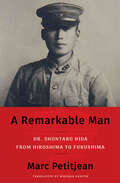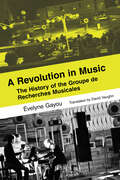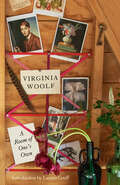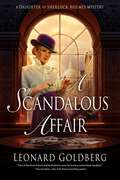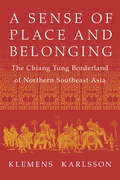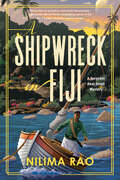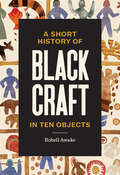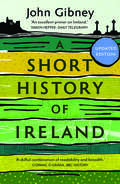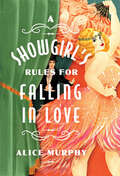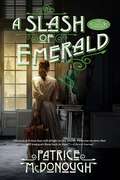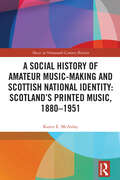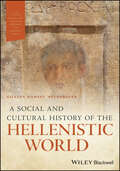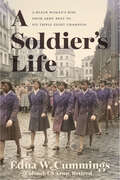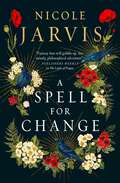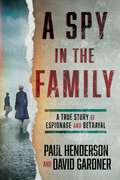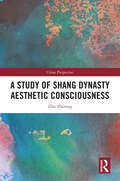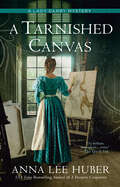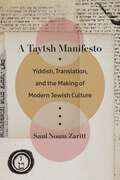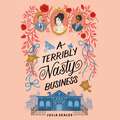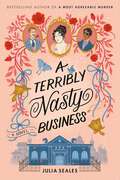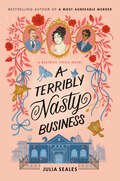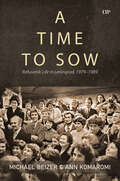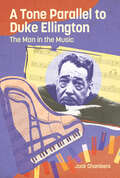- Table View
- List View
A Remarkable Man: Dr. Shuntaro Hida from Hiroshima to Fukushima
by Marc PetitjeanA poignant, eye-opening portrait of a witness to the atomic bomb who dedicated his life to treating and advocating for radiation survivors.As a young doctor, Shuntaro Hida (1917–2017) played an essential role in the aftermath of the Hiroshima bombing, which he witnessed firsthand only six kilometers from ground zero. Tending to the overwhelming number of victims, he would spend more than sixty years developing an unparalleled understanding of the harmful effects of radiation and warning against the reckless use of nuclear power.Through intimate, thoughtful interviews and compelling reportage, Marc Petitjean has created a worthy tribute to this determined, inspiring man who stood up to complicit governments and businesses. It testifies to the power of individuals to effect change as well as the importance of collective action, as demonstrated by organizations such as Nihon Hidankyo, a survivors&’ group that would receive the 2024 Nobel Peace Prize.
A Revolution in Music: The History of the Groupe de Recherches Musicales
by Évelyne GayouEstablished in the 1950s by musician and engineer Pierre Schaeffer, the Groupe de Recherches Musicales would become the nerve center for avant-garde artists experimenting with sound and acoustics, as well as the birthplace of a genre of music-making enabled by new recording technologies and sound pioneers: musique concrète. Évelyne Gayou—herself a researcher, composer, and producer at the GRM—tells the history of the storied institution through the people, works, technologies, and research developed there. Placing musique concrète within a broad historical context extending from the early twentieth-century avant-garde's experiments with noise to the development of techniques in sound recording (at the Studio d'Essai in the 1940s) and later in sound synthesis, Gayou shows how recording technology made it possible for composers to not only create music from sounds in the world around them but also create acousmatic music—novel sounds without a visible connection to their source. Available in English translation for the first time, this updated edition will be an important resource for readers interested in the pioneering works and techniques of Schaeffer and his contemporaries, as well as their influence on the makers of new music and the contemporary avant-garde.
A Room of One's Own (Vintage Classics)
by Virginia WoolfVirginia Woolf&’s classic plea for a world in which women are free to use their gifts is as powerful and resonant as ever.In this influential extended essay, Virginia Woolf outlined what women need in order to fully make use of their abilities. Using powerful images and memorable thought experiments--such as a fictional sister of William Shakespeare, who is as talented as her brother but limited in ways he was not--Woolf analyzes the many ways in which women have been held back throughout history and still are in her own time. First published in 1929, A Room of One's Own has been a towering and inspirational statement of feminist principles for nearly a century--and remains relevant now, at a time of growing awareness of the kind of social injustices that she decried.
A Scandalous Affair: A Daughter of Sherlock Holmes Mystery
by Leonard GoldbergIn the latest Daughter of Sherlock Holmes novel, Joanna Holmes must confront a shocking case of blackmail that threatens the highest levels of His Majesty&’s government, as this USA Today bestselling mystery series continues.In the latest installment of this acclaimed series, Sherlock Holmes&’s daughter faces an elaborate mystery that threatens the second most powerful man in His Majesty&’s government. His position is such that he answers only to the king and the prime minister. During the height of the Great War, Joanna Holmes and the Watsons receive a late-night, clandestine visit from Sir William Radcliffe, the Chancellor of the Exchequer, who brings with him an agonizing tale of blackmail; a case so sensitive that it can only be spoken of in the confines of 221B Baker Street. An unknown individual has come into possession of salacious photographs, which not only sullies the family name, but may force the chancellor to vacate his seat on the War Council where his advice is most needed. The blackmailer has in their possession revealing photographs that show Sir William&’s granddaughter in romantic encounters with a man other than the aristocrat to whom she is engaged to marry. Should the pictures be released to the public, the wedding would be immediately called off, and the prospect of the granddaughter ever finding a suitable husband would vanish. Sir William's family has been forced to pay exorbitant sums for several of the photographs, but even more salacious pictures remain in the blackmailer&’s possession—and will no doubt carry greater demands and threats. Scotland Yard cannot be involved, for fear of public disclosure. It thus falls on the shoulders of Joanna and the Watsons to expose the blackmailer and procure the photographs before irreparable harm comes to the chancellor and his family.
A Sense of Place and Belonging: The Chiang Tung Borderland of Northern Southeast Asia (NIU Southeast Asian Series)
by Klemens KarlssonA Sense of Place and Belonging examines a marginalized society, Chiang Tung (Keng Tung) in the Eastern Shan State of Myanmar, between the dominant cultures of the Burmese, Chinese, and Siamese/Thai. Chiang Tung sits at the historic borderland known as the Golden Triangle, an area marked by drug trade, human trafficking, and civil war. Hiding a glorious literary and visual cultural tradition from the fourteenth century, Chiang Tung is remarkable for how well it has maintained its Buddhist culture in the turbulent history of war and forced resettlement that formed northern Southeast Asia. Klemens Karlsson examines the connection between the Buddhist traditions, the ancient cult of territory spirits—a cult of the earth, place, and village that forms a kind of religious map—and the monsoon culture of wet rice irrigation. Tying together myths and memories told by local people and written in local chronicles with the unique performance of the Songkran festival, which dramatizes a symbolic agreement between Tai Khuen people and the indigenous Lua/Lawa people, A Sense of Place and Belonging presents a historical, political, religious, and cultural context connecting the present with the past, the local with the global, and tradition with change and transformation.
A Shipwreck in Fiji (A Sergeant Akal Singh Mystery)
by Nilima RaoFiji, 1915: when a purported sighting of Germans on the run from WWI turns deadly, Sergeant Akal Singh must (reluctantly) take up the investigation in this vibrant follow-up to A Disappearance in Fiji.Sergeant Akal Singh, an unwilling transplant to Fiji, is just starting to settle into his life in the capital city of Suva when he is sent to the neighboring island of Ovalau on a series of fool&’s errands. First: investigate strange reports of Germans, thousands of miles from the front of World War I. Second: chaperone two strong-willed European ladies, Mary and Katherine, on a sight-seeing tour. And third: supervise the only police officer currently on Ovalau, an eighteen-year-old constable with a penchant for hysterics.Accompanied by his friend Taviti, who is visiting his uncle, the local chief, Akal sets off on these seemingly straightforward tasks. Instead, they become embroiled in a series of local issues: the gruesome death of an unpopular local and the imprisonment of a group of Norwegian sailors in Taviti&’s uncle&’s village. To add to Akal&’s woes, Katherine, the charming aspiring journalist, harbors an agenda of her own. Will Akal be able to keep her—and himself—out of trouble before anybody else gets killed?Nilima Rao&’s debut, A Disappearance in Fiji, was a critical darling and award-winner, ending up on multiple best-of-year roundups. This next installment in the Sergeant Akal Singh series has all the charm and sparkle of the first book, with even more fascinating historical insight into the realities of life on Fiji at the start of the twentieth century.
A Short History of Black Craft in Ten Objects
by Robell AwakeTen beautifully illustrated essays tell the stories of handcrafted objects and their makers, providing inspiration and insight into Black history and craftsmanship.Black artisans have long been central to American art and design, creating innovative and highly desired work against immense odds. Atlanta-based chairmaker and scholar Robell Awake explores the stories behind ten cornerstones of Black craft, including:The celebrated wooden chairs of Richard Poynor, an enslaved craftsman who began a dynasty of Tennessee chairmakers.The elegant wrought-iron gates of Philip Simmons, seen to this day throughout Charleston, South Carolina, whose work features motifs from the Low Country.The inventive assemblage art and yard shows of Joe Minter, James Hampton, Bessie Harvey, and others, who draw on African spiritual traditions to create large-scale improvisational art installations.From the enslaved potters of Old Edgefield, South Carolina, to Ann Lowe, the couture dressmaker who made Jacqueline Kennedy's wedding dress, to Gullah Geechee sweetgrass basket makers, to the celebrated quilters of Gee's Bend, A Short History of Black Craft in Ten Objects illuminates the work of generations of Black craftspeople, foregrounding their enduring contributions to American craft.BLACK CRAFT AND AMERICANA: Delving into the history of Black skilled artisans, estimated to have outnumbered white artisans five to one in the southern United States in the late 1800s, this unique art history book celebrates handcrafted objects that reflect the dynamic nature of Black culture.DYNAMIC ILLUSTRATED ESSAYS: Luminous color illustrations by artist Johnalynn Holland highlight beloved craft objects and their makers, creating a fascinating volume to study and treasure.ART HISTORY EXPERTISE: Author Robell Awake is a notable furniture maker, artisan, and educator whose work has been featured in the New York Times and in group shows at Verso Gallery in New York City and the Center for Craft in Asheville, NC. Dr. Tiffany Momon, who contributes an afterword, is the founder and co-director of the Black Craftspeople Digital Archive and a leading scholar of Black history and African American placemaking throughout the southeast.BEAUTIFUL GIFT BOOK: The gorgeous design is ideal for art collectors and craft enthusiasts, as a keepsake reminder of Black heritage, for Black History Month and beyond.Perfect for:Anyone interested in the intersection of Black art, craft, and historyDesigners and craftspeopleEducators and studentsCollectors and museum curatorsLovers of fine and artisanal design objects
A Short History of Ireland, 1500-2000
by John GibneyA brisk, concise, and readable overview of Irish history from the Protestant Reformation to the dawn of the twenty-first century Five centuries of Irish history are explored in this informative and accessible volume. John Gibney proceeds from the beginning of Ireland&’s modern period and continues through to virtually the present day, offering an integrated overview of the island nation&’s cultural, political, and socioeconomic history. This succinct, scholarly study covers important historical events, including the Cromwellian conquest and settlement, the Great Famine, and the struggle for Irish independence. Gibney's book explores major themes such as Ireland&’s often contentious relationship with Britain, its place within the British Empire, the impact of the Protestant Reformation, the ongoing religious tensions it inspired, and the global reach of the Irish diaspora. This unique, wide-ranging work assimilates the most recent scholarship on a wide range of historical controversies, making it an essential addition to the library of any student of Irish studies.
A Showgirl's Rules for Falling in Love
by Alice MurphyMoulin Rouge meets The Greatest Showman in this romance between a vaudeville star and a showbiz tycoon who find love at the turn of the twentieth century—framed by mischievous commentary of a contemporary young historian. It&’s 1897, and a new fashion for thin threatens to end the career of proudly fat vaudeville performer Evelyn Cross. Enter Thomas Gallier, the man behind the new palace of entertainment promising to be the apex of New York City&’s theatrical scene. He&’s in search of a star for his vaudeville spectacular, and when he hears Evelyn sing, he knows exactly who he needs to grace his stage. In a grand finale, present-day narrator Phoebe steps in to reveal secrets and show readers what it really means to claim self-love. Inspired by the true story of a Progressive Era troop of plus-size dancers, this is a story about the spirit of community and the power of romance.
A Sister's Dream: a moving and uplifting emotional saga from the author of An Orphan’s Wish (Hilda House)
by Elizabeth GillThe new heart-wrenching, yet hopeful, historical saga from Elizabeth Gill.After falling pregnant unexpectedly, sixteen-year-old Catrin is devastated when her neglectful father sends her away and has her baby taken from her.Then she's reunited with her brother Roddy, a trainee doctor, and Catrin determines to change her life for the better, despite her grief, by learning to become a doctor in her own right.But society isn't welcoming to female doctors or unmarried mothers. Will Catrin be able to win her patients' trust and fulfil her dream to help other women like her? And will she ever be able to find the child she's never forgotten?
A Sister's Dream: a moving and uplifting emotional saga from the author of An Orphan’s Wish (Hilda House)
by Elizabeth GillThe new heart-wrenching, yet hopeful, historical saga from Elizabeth Gill.After falling pregnant unexpectedly, sixteen-year-old Catrin is devastated when her neglectful father sends her away and has her baby taken from her.Then she's reunited with her brother Roddy, a trainee doctor, and Catrin determines to change her life for the better, despite her grief, by learning to become a doctor in her own right.But society isn't welcoming to female doctors or unmarried mothers. Will Catrin be able to win her patients' trust and fulfil her dream to help other women like her? And will she ever be able to find the child she's never forgotten?
A Slash of Emerald (A Dr. Julia Lewis Mystery)
by Patrice McDonoughIn a riveting new novel in a Victorian-set mystery series brimming with authentic atmosphere, Doctor Julia Lewis, Scotland Yard&’s first female medical examiner, and her partner, Detective Inspector Richard Tennant, investigate a string of murders in the art world.London, 1867: Among the genteel young ladies of London society, painting is a perfectly acceptable pastime—but a woman who dares to pursue art as a profession is another prospect, indeed. Dr. Julia Lewis, familiar with the disrespect afforded women in untraditional careers, is hardly surprised when Scotland Yard shows little interest in complaints made by her friend, Mary Allingham, about a break-in at her art studio. Mary is just one of many &“lady painters&” being targeted by vandals. Painters&’ sitters are vanishing, too—women viewed by some as dispensable outcasts. Inspector Richard Tennant, however, takes the attacks seriously, suspecting they&’re linked to the poison-pen letters received by additional members of the Allingham family. For Julia, the issue is complicated by Tennant&’s previous relationship with Mary&’s sister-in-law, Louisa, and by her own surprising reaction to that entanglement. But when someone close to them commits suicide and a young woman turns up dead, the case can no longer be so easily ignored by &‘respectable&’ society. Layer after layer, Julia and Tennant scrape away the facts of the case like paint from a canvas. What emerges is a somber picture of vice, depravity, and deception stretching from London&’s East End to the Far East—with a killer at its center, determined to get away with one last, grisly murder . . .
A Social History of Amateur Music-Making and Scottish National Identity: Scotland’s Printed Music, 1880–1951 (Music in Nineteenth-Century Britain)
by Karen E. McAulayLate Victorian Scotland had a flourishing music publishing trade, evidenced by the survival of a plethora of vocal scores and dance tune books; and whether informing us what people actually sang and played at home, danced to, or enjoyed in choirs, or reminding us of the impact of emigration from Britain for both emigrants and their families left behind, examining this neglected repertoire provides an insight into Scottish musical culture and is a valuable addition to the broader social history of Scotland.The decline of the music trade by the mid-twentieth century is attributable to various factors, some external, but others due to the conservative and perhaps somewhat parochial nature of the publishers’ output. What survives bears witness to the importance of domestic and amateur music-making in ordinary lives between 1880 and 1950. Much of the music is now little more than a historical artefact. Nonetheless, Karen E. McAulay shows that the nature of the music, the song and fiddle tune books’ contents, the paratext around the collections, its packaging, marketing and dissemination all document the social history of an era whose everyday music has often been dismissed as not significant or, indeed, properly ‘old’ enough to merit consideration.The book will be valuable for academics as well as folk musicians and those interested in the social and musical history of Scotland and the British Isles.
A Social and Cultural History of the Hellenistic World (Wiley Blackwell Social and Cultural Histories of the Ancient World)
by Gillian Ramsey NeugebauerExplore the detailed and personal stories of real people living throughout the Hellenistic world In A Social and Cultural History of the Hellenistic World, author Gillian Ramsey Neugebauer paints a vivid picture of the men and women of the Hellenistic period, their communities, and their experiences of life. Assuming only minimal knowledge of classical antiquity, this clear and engaging textbook brings to life the real people who lived in the Mediterranean region, the Balkans, around the Black Sea, across North Africa, and the Near East. Rather than focusing on the elites, royals, and other significant figures of the period, the author draws from a wide range of ancient evidence to explore everyday Hellenistic people in their own context. Reader-friendly chapters offer fresh perspectives on well-studied areas of ancient Greek culture while providing new insights into rarely discussed aspects of day-to-day life in the Hellenistic world. Topics include daily technology, food, clothing, housing, travel, working life, slavery, education, temple economies, and more. Containing numerous references, further readings, photographs, and figures, A Social and Cultural History of the Hellenistic World is an excellent textbook for undergraduate and graduate courses in Ancient History or Classical Studies programs, particularly those dedicated to Hellenistic history.
A Soldier's Life: A Black Woman's Rise from Army Brat to Six Triple Eight Champion (The Black Soldier in War and Society)
by Edna W. CummingsOne woman's extraordinary personal journey in the US military and her triumphant effort to honor her predecessors with the Congressional Gold Medal Looking back on her remarkable career, Retired Army Colonel Edna W. Cummings can justly say that &“the odds ain&’t good, but good stuff happens.&” Her story is as inspiring as it is improbable, but her memoir is about much more than herself. Chronicling Cummings&’s unlikely but successful path to leadership roles in the army and afterward, it also tells the story of the 6888th Central Postal Directory Battalion, known as the Six Triple Eight—a trailblazing African American World War II Women&’s Army Corps unit now the subject of a Netflix film and a Broadway-bound musical—and the grassroots campaign Cummings led to honor them. In 2022, due in large part to Cummings&’s efforts, the Six Triple Eight was awarded the nation&’s highest civilian honor—the Congressional Gold Medal. Among the fewer than two hundred recipients, including the crew of Apollo 11 and the Navajo Code Talkers, the Six Triple Eight is the only women&’s unit to receive this prestigious decoration. In A Soldier&’s Life Colonel Cummings narrates her path from childhood to advocate and how she overcame incredible odds not only for herself but on behalf of those who had come before her.
A Spell for Change
by Nicole JarvisIn this sumptuous, atmospheric historical fantasy set in post-World War One Appalachia, three outcasts with misunderstood magical gifts search for their place in the world while battling the dark forces that circle their community. Perfect for fans of Katherine Arden and Susanna Clarke.Kate Mayer has always been troubled by visions of the future. No matter what she does, her disturbing premonitions come to pass—often with terrible consequences. But Kate has a secret: swirling, romantic dreams of a strange boy, and a chance meeting in the woods.Oliver Chadwick Jr. returned from the Great War disabled, disillusioned, and able to see the dead. Haunted by the death of his best friend, Oliver realizes that his ability to communicate with spirits may offer the chance of closure he desperately seeks.Nora Jo Barker&’s mother and grandmother were witches, but she has never nurtured her own power. Always an outsider, she has made a place for herself as the town's schoolteacher, clinging to the independence the job affords her. When her unorthodox ideas lead to her dismissal, salvation comes in the form of a witch from the mountains, who offers her a magical apprenticeship. Yet as she begins to fall for another woman in town, her loyalties pull her in disparate directions.Rumors of a dark force stalking the town only push Kate, Oliver, and Nora Jo onwards in their quest to determine their own destinies. But there are powers in the world stronger and stranger than their own, and not all magic is used for good...
A Spy in the Family: A True Story of Espionage and Betrayal
by David Gardner Paul HendersonA can’t-believe-it’s-true wartime page-turner that tells the incredible story of a mother, the son she was forced to give up for adoption, and the spy who, decades later, infiltrated her life with a devastating lie. Johanna van Haarlem never wanted to abandon her son, Erwin. But the Nazis had occupied Europe and the teenager felt she had little choice. Her father had kicked her out, telling her she could return, without the child—or not at all. Johanna realized that together, she and her newborn wouldn’t survive; separated, at least Erwin had a fighting chance. So she surrendered the baby to an orphanage and tearfully went back home, vowing to return for Erwin one day.Johanna lives to see the Nazis defeated, and to deeply regret abandoning her child. When, decades later, at the height of the Cold War, she receives a letter from Erwin, it feels like a miraculous second chance. But at their joyful reunion in London, Johanna makes a disturbing discovery: Erwin’s eyes are the wrong colour. In a decision that will come to haunt her, she quickly buries the seed of her doubt and welcomes the young man into her life.It will take more than a decade for the imposter’s deceit to come to light, even longer to untangle the lies shielding his real identity—and his motives. Unfolding in a series of astonishing twists and turns, A Spy in the Family reveals the true story of a notorious Soviet Bloc agent who took advantage of a mother’s heartbreak to hide in plain sight.
A Study of Shang Dynasty Aesthetic Consciousness (ISSN)
by Zhu ZhirongThis book explores the aesthetic consciousness of the Shang Dynasty and its influence on Chinese aesthetic development and contemporary aesthetic creation.The Shang Dynasty is the first era in China with authentic historical documentation. Its artifacts and inscriptions have great aesthetic value and serve as vivid and rich records of aesthetic concepts. By examining the production and use of pottery, jade, bronze, and oracle bone inscriptions, the book sheds light on the functions of these creations as media for conveying emotions driven by human nature. By discussing how the Shang script was invented and used, the author explores the significant role it played in the development of the aesthetic consciousness of the Chinese ancients. Based on surviving documents, including the hexagrams in the Book of Changes, the Pan Geng in the Book of Documents, and the Shang Songs in the Book of Songs, he further examines the poetic characteristics of Shang literature, recognizing it as both historically and literarily significant.The title is essential reading for scholars, students, and general readers interested in Chinese aesthetics, ancient Chinese civilization, culture, and art.
A Tarnished Canvas (A Lady Darby Mystery)
by Anna Lee HuberLady Kiera Darby had planned to spend the winter practicing her painting, but instead, she must find the flaw in a killer&’s masterpiece when an art auction results in one participant&’s final bid.…March 1833. Kiera and her husband, Sebastian Gage, have decided to settle in Edinburgh for the winter with their infant daughter. This also allows Kiera to enjoy long hours painting in her studio, making progress on the portraits she soon hopes to unveil in her own exhibit. She&’s thrilled when she receives an invitation to the auction of the late Lord Eldin&’s coveted art collection, and she and Gage eagerly accept. When the floor collapses beneath the gathering, killing one of their fellow bidders, Kiera and Gage are lucky to escape with their lives.Within days it becomes apparent that what at first seemed to be a terrible accident is actually something far more nefarious. Someone deliberately compromised the integrity of the structure, though the police are unsure of the culprit&’s aim. Sergeant Maclean requests Kiera and Gage&’s assistance in figuring out who would wish to harm the bidders. As they dig deeper, it becomes increasingly apparent that the victim was not the killer&’s intended target . . . and that Kiera was lured to the auction deliberately. Kiera and Gage must utilize all their resources to unveil a monster willing to risk the lives of dozens of bystanders to achieve their ends. But they&’re on the verge of making a dire miscalculation. For one of the cleverest tricks in a painter&’s repertoire is the art of misdirection, and their eyes have been drawn far from the gravest danger.
A Taytsh Manifesto: Yiddish, Translation, and the Making of Modern Jewish Culture
by Saul Noam ZarittA Taytsh Manifesto calls for a translational paradigm for Yiddish studies and for the study of modern Jewish culture. Saul Noam Zaritt calls for a shift in vocabulary, from Yiddish to taytsh, in order to promote reading strategies that account for the ways texts named as Jewish move between languages and cultures. Yiddish, a moniker that became dominant only in the early twentieth century, means “Jewish” and thus marks the language with a single identity: of and for a Jewish collective. In contrast, this book calls attention to an earlier and, at one time, more common name for the language: taytsh, which initially means “German.” By using the term taytsh, speakers indicated that they were indeed speaking a Germanic language, a language that was not entirely their own. In time, when the word shifted to a verb, taytshn, it came to mean the act of translation. To write or speak in Yiddish is thus to render into taytsh and inhabit the gap between languages.A Taytsh Manifesto highlights the cultural porousness that inheres in taytsh and deploys the term as a paradigm that can be applied to a host of modern Jewish cultural formations. The book reads three corpora in modern Yiddish culture through the lens of translation: Yiddish pulp fiction, also known as shund (trash); the genre of the Yiddish monologue as authored by Sholem Aleichem and other prominent Yiddish writers; and the persistence of Yiddish as a language of vulgarity in contemporary U.S. culture. Together these examples help revise current histories of Yiddish while demonstrating the need for new vocabularies to account for the multidirectionality of Jewish culture. A Taytsh Manifesto develops a model for identifying, in Yiddish and beyond, how cultures intertwine, how they become implicated in world systems and empire, and how they might escape such limiting and oppressive structures.
A Terribly Nasty Business
by Julia SealesAfter achieving her lifelong dream of solving a murder, Beatrice Steele feels like everything is finally falling into place. Accompanied by her ever-trusty chaperone, Miss Bolton, she's traded her small town for London and opened a new office with prickly, annoyingly logical Inspector Drake to solve the city's brutally thrilling crimes.However, nothing is turning out how Beatrice imagined it would. Famed gentleman inspector Sir Huxley is considered the real investigator in London, so the only cases left for Beatrice and Drake are lost pets and spectacles. Not that Beatrice has much time for crime-solving, anyways, as her mother still expects her to find an eligible husband to protect their family from destitution. That is until a string of murders thrusts Beatrice and Drake into the center of a scandal that spreads fear and chaos throughout the city. As they follow the trail through bewildering ballrooms, secretive shops, and odd operas, Beatrice must break the case--before it's too late.
A Terribly Nasty Business
by Julia SealesAfter achieving her lifelong dream of solving a murder, Beatrice Steele feels like everything is finally falling into place. Accompanied by her ever-trusty chaperone, Miss Bolton, she's traded her small town for London and opened a new office with prickly, annoyingly logical Inspector Drake to solve the city's brutally thrilling crimes.However, nothing is turning out how Beatrice imagined it would. Famed gentleman inspector Sir Huxley is considered the real investigator in London, so the only cases left for Beatrice and Drake are lost pets and spectacles. Not that Beatrice has much time for crime-solving, anyways, as her mother still expects her to find an eligible husband to protect their family from destitution. That is until a string of murders thrusts Beatrice and Drake into the center of a scandal that spreads fear and chaos throughout the city. As they follow the trail through bewildering ballrooms, secretive shops, and odd operas, Beatrice must break the case--before it's too late.
A Terribly Nasty Business: A Beatrice Steele Novel
by Julia SealesLondon provides fabulously deadly opportunities for a fledgling inspector in the twisty follow-up to Julia Seales&’s bestselling debut, A Most Agreeable Murder, hailed by People as a &“delightful cocktail . . . of wit, hilarity, and suspense!&”After achieving her lifelong dream of solving a murder, bringing a killer to justice, and proving she is not, in fact, a morbid creep, Beatrice Steele feels like everything is finally falling into place. She&’s traded her etiquette-obsessed community of Swampshire for the big city of London, accompanied by her ever-trusty chaperone, Miss Bolton. They&’ve settled in a lovely neighborhood, Sweetbriar, known for its proximity to the Sweet Majestic theater, picturesque pleasure gardens, and an unfortunate infestation of flying squirrels. But Beatrice&’s favorite part is that Sweetbriar is also home to DS Investigations, the new office she opened with the prickly, annoyingly logical Inspector Drake to solve the city&’s brutally thrilling crimes.However, nothing is turning out how Beatrice imagined it would. Sir Huxley, famed gentleman inspector and Beatrice&’s former crush, is still considered the real investigator in London, so the only cases left for Beatrice and Drake are lost pets and spectacles. Not that Beatrice has much time for crime-solving anyway, as her mother still expects her to find an eligible (rich) husband to protect their family from destitution. Beatrice is struggling to balance all the demands on her and begins to wonder if she can become a true detective in a city that feels full of false promises.That is until a string of murders thrusts Beatrice and Drake into the center of a scandal that pits the neighborhood&’s wealthiest against the arts community, spreading fear and chaos throughout the city. As they follow the trail through bewildering ballrooms, secretive shops, and odd operas, Beatrice must survive threats to her partnership, her business, and her place in society to break the case—before it&’s too late.
A Time to Sow: Refusenik Life in Leningrad, 1979–1989
by Ann Komaromi Michael BeizerA Time to Sow offers a glimpse into the unofficial Jewish life in 1980s Leningrad, shaped by numerous long-term refusals from authorities to grant exit visas to Jews seeking to migrate to Israel. The book reveals how the lives of the “refuseniks” were marked by a continuous struggle for the right to emigrate, as well as by the formation of an informal community. It traces how the community provided mutual assistance in times of distress, particularly offering support to imprisoned activists and their families. The community also maintained contacts with co-religionist supporters visiting from abroad, engaged in Hebrew teaching, facilitated religious revival, celebrated Jewish holidays as a group, disseminated samizdat publications, conducted popular lectures on Jewish history and culture, and pursued Jewish studies. The book divulges how all these activities took place in private, despite the ban and persecution by the authorities. Drawing from analyses of historical sources, rare archival materials, as well as personal experiences including interviews with activists, the book provides a rich and nuanced understanding of this unique period. Ultimately, A Time to Sow presents a critical, non-apologetic perspective to uncover a distinctive, little-known chapter of Russian Jewish history in Leningrad, one of Russia’s most important cities.
A Tone Parallel to Duke Ellington: The Man in the Music (American Made Music Series)
by Jack ChambersIn this insightful new volume, Jack Chambers explores Edward Kennedy “Duke” Ellington’s music thematically, collating motifs, memes, and predilections that caught Ellington's attention and inspired his restless muse. In presenting Ellington’s work in this manner, Chambers situates the music in the context in which it was created—historical, political, musical, biographic, and personal. Chambers offers a novel kind of access to the man and the music. Ellington’s music presents a daunting task for listeners because of its sheer volume. The numbers defy credulity. Ellington (1899–1974) wrote more than two thousand compositions in numerous genres, including pop songs, big band swing, revues, hymns, tone poems, soundtracks, suites, ballets, concertos, and symphonies. Where to start? The themes in this book offer natural entry points. They provide the context in which the music came into being, with enough biography to satisfy music lovers, even those who come to the book knowing very little about Ellington’s life. Each chapter features its own playlist as a guide to the music discussed, and, in some cases, fuller listings in case readers might want to pursue a topic further. In the early chapters, Chambers covers topics that occupied Ellington through much of his career, and in later chapters he covers more specific themes, some of them from Ellington's last decades, which are less well studied. The music, Ellington said, is his “continuing autobiography,” and it reveals the man behind it.
